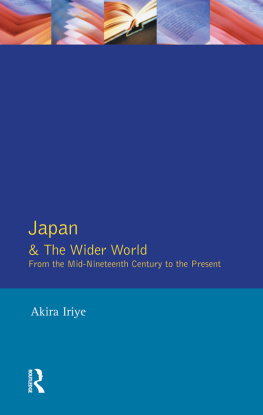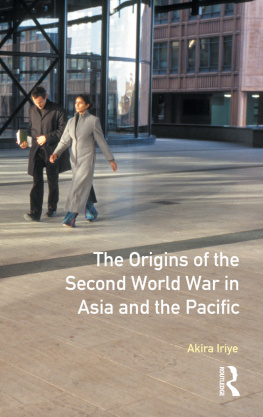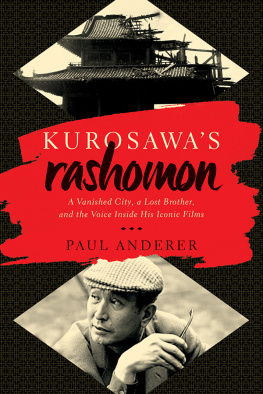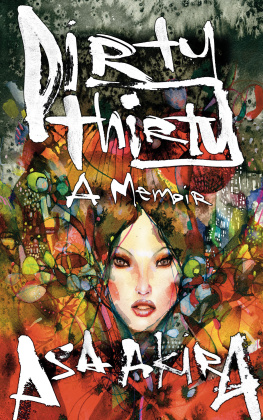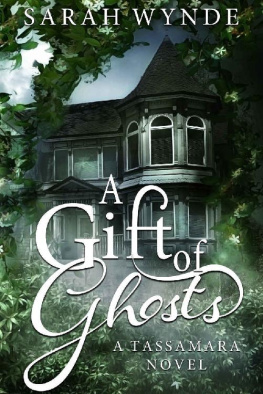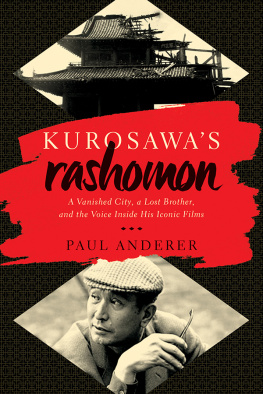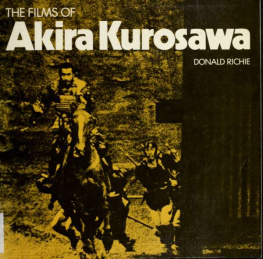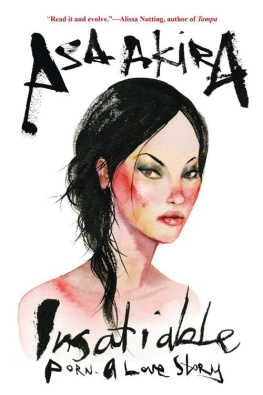Akira Kurosawa - Something like an autobiography
Here you can read online Akira Kurosawa - Something like an autobiography full text of the book (entire story) in english for free. Download pdf and epub, get meaning, cover and reviews about this ebook. year: 1983, publisher: Vintage Books, genre: Non-fiction. Description of the work, (preface) as well as reviews are available. Best literature library LitArk.com created for fans of good reading and offers a wide selection of genres:
Romance novel
Science fiction
Adventure
Detective
Science
History
Home and family
Prose
Art
Politics
Computer
Non-fiction
Religion
Business
Children
Humor
Choose a favorite category and find really read worthwhile books. Enjoy immersion in the world of imagination, feel the emotions of the characters or learn something new for yourself, make an fascinating discovery.

- Book:Something like an autobiography
- Author:
- Publisher:Vintage Books
- Genre:
- Year:1983
- Rating:4 / 5
- Favourites:Add to favourites
- Your mark:
- 80
- 1
- 2
- 3
- 4
- 5
Something like an autobiography: summary, description and annotation
We offer to read an annotation, description, summary or preface (depends on what the author of the book "Something like an autobiography" wrote himself). If you haven't found the necessary information about the book — write in the comments, we will try to find it.
Something like an autobiography — read online for free the complete book (whole text) full work
Below is the text of the book, divided by pages. System saving the place of the last page read, allows you to conveniently read the book "Something like an autobiography" online for free, without having to search again every time where you left off. Put a bookmark, and you can go to the page where you finished reading at any time.
Font size:
Interval:
Bookmark:
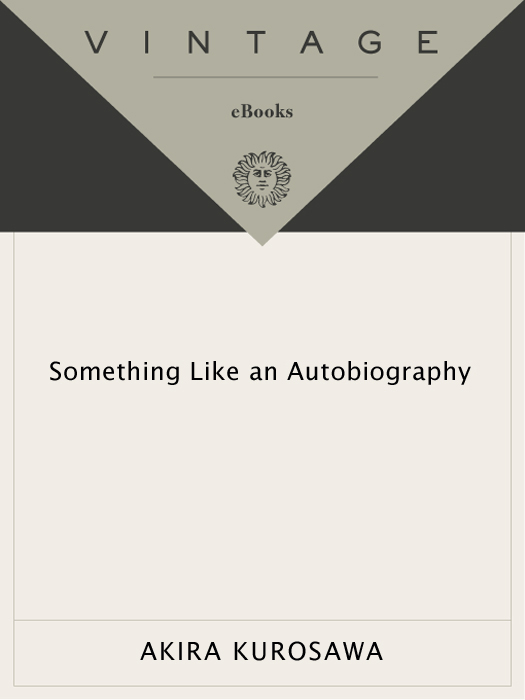
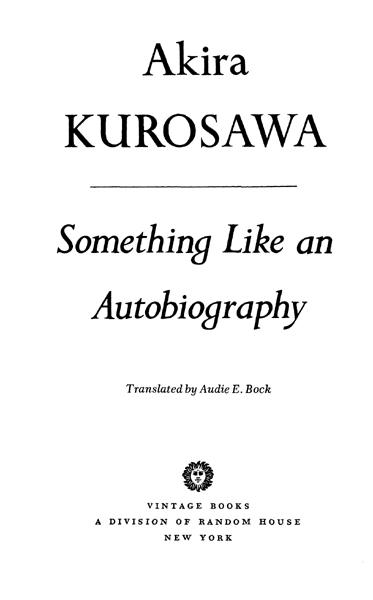
First Vintage Books Edition, May 1983
Copyright 1982 by Akira Kurosawa
Appendix copyright 1975 by Toho Company, Ltd., Japan All rights reserved under International and Pan-American Copyright Conventions. Published in the United States by Random House, Inc., New York, and simultaneously in Canada by Random House of Canada Limited, Toronto. Originally published by Alfred A. Knopf, Inc. in 1982.
This book is published under a program designed to encourage the translation and publication of major Japanese writings not previously available in English. The program was conceived by the Japanese Society of New York, and Alfred A. Knopf, Inc., is grateful to the Society for its continued support.
Library of Congress Cataloging in Publication Data
Kurosawa, Akira, 1910
Something like an autobiography.
Translation of : Gama no abura.
1. Kurosawa, Akira, 1910
2. Moving-picture producers and directorsJapanBiography.
I. Title.
PN1998.A3K789413 1983 791.4302330924 [B] 82-48900
eISBN: 978-0-307-80321-4
v3.1

I AWAITED my first meeting with Kurosawa Akira with a great deal of curiosity and a fair amount of dread. I had heard stories about his imperial manner, his severe demands and difficult temper. I had heard about drinking problems, a suicide attempt, rumors of emotional disturbance in the late sixties, isolation from all but a few trusted associates and a contempt for the ways of the world. I was afraid a face-to-face encounter could do nothing but spoil the marvelous impression I had gained of him through his films.
Nevertheless I had a job to do: I was writing a book on those I considered to be Japans best film directors, past and present. I had promised my publisher interviews with all the living artists; I could hardly omit the best-known Japanese director in the world. I requested an interview through his then producer, Matsue Yichi. I waited.
Six months went by, and my Fulbright year in Tokyo was drawing to a close. I was packing my bags and distributing my household goods among my friends in preparation for departure the next morning when the telphone rang. Matsue was calling to say Kurosawa and he would have coffee with me that very afternoon.
In the interim I had of course interviewed all the other subjects for the book, and all had spoken very highly of Kurosawa. In fact, the whole chapter on Kurosawa was already roughed out with the help of previous publications and these directors contributions, so it seemed possible that my meeting with the man himself would be nothing more than a formality. Not only Kurosawas fellow directors, but film-company executives, independent producers and most of the older generation of Japanese critics regarded him as a special case, someone whose eccentricities were readily excused by his stature as an artist. Even the younger generation of filmmakers credited Kurosawa, whose style they opposed as representative of the establishment, with bringing Japanese cinema to the attention of the world, and thus opening an international pathway for them. In short, although Kurosawa was indeed regarded as a difficult person to deal with, a large part of this difficulty seemed to lie in the fact that he was in a class by himself, the most important member of the Japanese film community, yet one whose standards were anything but typical.
The unique and in some respects uncomfortable position Kurosawa held grew out of his unprecedented and as yet unmatched international success. His 1950 film Rashmon not only opened the eyes of the world to the existence of a cinema in this remote, war-shaken country that could be universally appreciated, but launched his personal career into a course of consistent triumphs a decade and a half long. Rashmons Golden Lion at the Venice International Film Festival was succeeded by countless awards for virtually every film he wrote and directed, period and contemporary dramas alike.
The twelve films that Kurosawa made between 1950 and 1965 were all box-office successes in Japan, and eventually made an impact on international commercial cinema. The Italian Sergio Leone did him the ambiguous honor of remaking Yojimbo as a spaghetti Western called A Fistful of Dollars, while Hollywood itself remade two of his period films as Westerns: Rashmon as The Outrage and Seven Samurai as The Magnificent Seven. No other Japanese director has ever received such homage from the West.
But after the success of Red Beard, released in 1965, Kurosawas steady rise came to an abrupt halt, and his career seemed to suddenly collapse. Hollywoods discovery of his talent had led to a contract with 20th Century-Fox to direct the Japanese half of an ambitious bilateral vision of the Pacific war called Tora! Tora! Tora! It was not long before terrible communication problems developed over the budget, the schedule and, most important for Kurosawa, final cut, or the right to approve the editing of his own work. Amid accusations that he was carrying perfectionism to the point of insanity, he left the project.
To anyone who reads Something Like an Autobiography, Kurosawas insistence on artistic control will come as no surprise; throughout his career his position on this point has been almost absolute. But in this case it seriously jeopardized his future as a filmmaker. He was unable to obtain financing for further projects until three fellow directors joined with him to produce Dodeskaden, released in 1970, which he made, he says, partly to prove I wasnt insane. It cost less than one million dollars and was shot in twenty-eight days, but it still lost money at the box office, the first time a Kurosawa film had ever done so.
This discouragement and ill healthan undiagnosed gallstone conditionwere the apparent causes of a suicide attempt in 1971. Recovery came only with successful medical treatment and surgery andin 1973an offer from the Soviet Union to direct a project of his own choosing, financed by Mosfilm. Dersu Uzala, a Russian story he had been attracted to since the time he was an assistant director, was the result. It required two years of filming in Siberia and gained the 1976 Academy Award for Best Foreign Language Film.
Despite the acclaim, Kurosawas projects continued to meet opposition. It was difficult for outsiders to understand why Japans foremost director was not working. The basic reason was that the Japanese film industry had entered a decline in the late 1960s and the budget for a Kurosawa film was no longer affordable. I did not know it at the time, but I would be meeting Kurosawa at a moment when two of his scripts in succession had been turned down because of their high production cost, and when he was about to start work on yet a third.
For that third script to become a finished film would require the intervention of Kurosawas American admirers Francis Ford Coppola, of The Godfather and Apocalypse Now fame, and George Lucas, the writer-director of Star Wars and American Graffiti, who persuaded 20th Century-Fox to negotiate for the purchase of the international distribution rights. An understandably wary Kurosawa finally agreed, and
Font size:
Interval:
Bookmark:
Similar books «Something like an autobiography»
Look at similar books to Something like an autobiography. We have selected literature similar in name and meaning in the hope of providing readers with more options to find new, interesting, not yet read works.
Discussion, reviews of the book Something like an autobiography and just readers' own opinions. Leave your comments, write what you think about the work, its meaning or the main characters. Specify what exactly you liked and what you didn't like, and why you think so.

